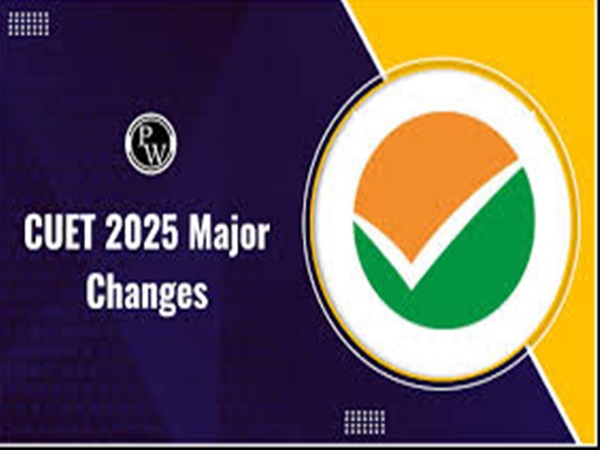


|
Tweet
Pin
It
|

University Grant Commission (UGC) Chairman M Jagadesh Kumar has announced
changes in the Common University Entrance Test (CUET), undergraduate and
postgraduate 2025, saying the total number of subjects has been reduced to 37
from 63 and there will be uniform exam duration of 60 minutes.
He said 20
language subjects have been discontinued and admissions to the dropped subjects
can be done based on General Aptitude Test (GAT) scores.
The
domain-specific subjects were 29 earlier, but the UGC has decided to discontinue
six subjects, bringing the number down to 23, Kumar added.
The changes
were recommended by an expert committee formed by the UGC to review the conduct
of the CUET-UG and CUET-PG exams for the 2025 academic session.
"CUET
will remain as 13 languages as it was last year. However, the separate test for
languages will be conducted only in these 13 languages. We are discontinuing the
20 language papers from last year but in these programmes, based on general
(aptitude) test scores, admission can be done. The total subjects are reduced
from 63 to 37 this year because we are reducing 20 language subjects. There were
29 domain-specific subjects last year and we are bringing this down to 23. We
are discontinuing six papers including Entrepreneurship, Teaching Aptitude,
Fashion Studies, Tourism, Legal studies and Engineering graphics... in
undergraduate programmes, admissions can be taken on the basis of general test
score," the UGC Chairman told ANI.
He further stated that all 50
questions would be compulsory in the CUET as opposed to last year when the
students could choose to answer 40 questions. Moreover, the UGC chairman
announced a uniform time limit of one hour to conclude the examination for all
subjects.
The UGC Chairman informed that all papers will carry 250 marks
in total and there will be negative markings for every incorrect answer.
"Last year, a few subjects had 60 minutes of test duration and a few subjects
had 45 minutes. But this year, we are allowing 1 hour (60 minutes) of duration
for all subjects. Last year, there were 50 questions out of which students could
opt for 40. But this year, all 50 questions would be compulsory. Because all
subjects will have 50 questions...the correct answer will get five marks each
while the incorrect answer will be marked minus one. All papers will have 250
marks," UGC Chairman Kumar told ANI.
Earlier, Kumar had said that an
expert committee was constituted to review the conduct of CUET-UG and CUET-PG
exams for 2025. The committee has examined various aspects of the test, such as
its structure, number of papers, duration of test papers, syllabus alignment,
and operational logistics and considered these recommendations in its meeting on
November 13.
On December 5, the UGC introduced draft regulations and
invited public feedback. Some of the major reforms in the draft regulations
included biannual admissions, the provision of multiple entry and exit,
eligibility for admission in any discipline of the UG or PG program regardless
of the disciplines taken in class 12, and the requirement for a student to earn
a minimum of 50 per cent of total credits in a discipline to obtain an
undergraduate degree with a major in that discipline.
The Common
University Entrance Test (CUET), which was implemented to standardise the
admissions process among institutions, has developed an open, technologically
advanced system that guarantees equal chances for candidates with different
educational backgrounds.
The CUET was introduced in the year 2022 as a
step toward standardizing the admission process for undergraduate (UG) and
postgraduate (PG) programmes across universities.
CUET has provided a
level playing field for students from diverse educational boards and
socio-economic backgrounds, ensuring equal opportunity for all aspirants. Last
year, 283 universities adopted CUET, and the number of registered candidates was
13,47,820.
By encouraging the Universities to adopt a single,
national-level entrance test, CUET has streamlined admissions, reduced the
reliance on varying cut-offs, and made the admission process transparent and
technology-driven.
Find it Useful ? Help Others by Sharing Online
|
Tweet
Pin
It
|
Comments and Discussions
More News & Events |
|
| VIEW MORE... | |
|
|